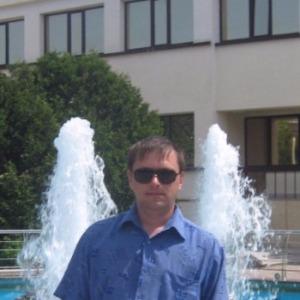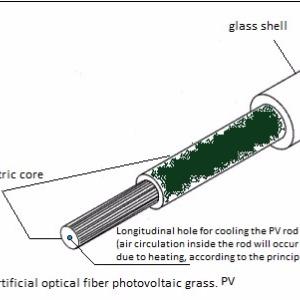 Betsy Agar Aug 20, 2017 01:51 | Wow! This is such a great integration of principles, exactly the standard of coordination necessary to get us away from pitting solutions against each other towards getting them to work in tandem. Like Jackson Pollock, you have also flipped your canvas, and without looking at the graphic, I didn't understand you mean to stand these tubes on their ends--a description of the physical aspects would be helpful at the outset. Do you have any sense of the cost this system might incur? Also, have you anticipated other challenges to the success of this system coming to fruition? I'm also curious about where and who is meant for this application. |
 Maksim Kovalevich Aug 22, 2017 03:38 | Proposal contributor Problems that need to be solved with the help of calculations - What is your cross-section area of PV fibers? This concept of PV fibers is designed to be installed in any state as an alternative to existing 2D solar panels with low efficiency, which take away a large amount of land resources or floating marine solar power plants located on the surface of water, which in time will turn the location of its location into marshes by stopping photosynthesis in water . www.linkedin.com/feed/update/urn:li:activity:6277460942871764992 |
 Michal Monit Sep 6, 2017 09:09 | Hi Maksim, I think the biggest obstacle for the technology might be the small effective area of each "stalk" - somehow analogous to cosine losses in CSP plants. In that case there are a few options, e.g. making the generators super-cheap (both the PV cells and structural materials), having them optimized for high density placement and / or having important secondary functions (e.g. generating energy from the swaying motion, as you mentioned). In fact, I think those tiny "artificial lawns" could be even more interesting than big "fibers" because of mechanical requirements growing disproportionately with size (a need for flexible PV cells, cyclical mechanical loads, brittle glass, etc.). |
 Maksim Kovalevich Sep 7, 2017 03:17 | Proposal contributor Thank you for supporting Michal. In this concept there is a visual similarity with plants, but plants do not have an outer transparent layer that will refract and trap (spread throughout the fiber) with the help of total internal reflection of solar energy. The shown photographs are a conditional example of this concept (conditional visualization of the concept), they do not provide true dimensions which can be of different sizes, these dimensions of fiber should be calculated depending on the characteristics of the materials used in this technology. |
 Maksim Kovalevich Nov 6, 2017 11:40 | Proposal contributor On my recommendations page, concept diagrams have been added http://image-store.slidesharecdn.com/b1a3a7bb-2e48-444a-b2f3-438029898d1b-original.jpeg http://image-store.slidesharecdn.com/fbff9981-fb81-42d6-9779-1bc197657a80-original.jpeg http://image-store.slidesharecdn.com/98e27de7-15a8-4a4f-a37c-fc71dd4c9859-original.jpeg Thank you. |
 Maksim Kovalevich Jan 17, 2018 11:51 | Proposal contributor Thank you. |
 Maksim Kovalevich Mar 10, 2018 10:37 | Proposal contributor It is possible to further enhance the efficiency of the concept, it is necessary to apply a thermoelectic effect (thermoelectric generator) for the direct conversion of thermal energy into electricity by using thermoelements in its design. I hope that the maximum effect will be obtained from the use of solar energy, thermal energy and wind energy? Is it economically feasible to use the cooling air flow inside the fiber to obtain additional electricity by applying the thermoelectric effect |
 Maksim Kovalevich Dec 23, 2018 10:23 | Proposal contributor Diagram of a solar battery concept.Link to the photo 1. Diagram of a solar battery concept.Link to the photo 2. Diagram of a solar battery concept.Link to the photo 3. Diagram of a solar battery concept.Link to the photo 4. On my recommendations page, concept diagrams have been added https://drive.google.com/file/d/1XQV6gbn8CWPOkY0cswhwjmKNSNQY5G8C/view?usp=sharing https://drive.google.com/file/d/1eug3VXRYegLLa94LQVsJTv-LT6QjwJIb/view?usp=sharing https://drive.google.com/file/d/1dLImmmFrPeLcUaxXRKTKzpGwOaqmScPx/view?usp=sharing https://drive.google.com/file/d/1W8DEzUVs86aOVLvm2QOdLhViPDTVs-eD/view?usp=sharing
|
 Maksim Kovalevich Jan 27, 2020 12:30 | Proposal contributor I did everything in my power for renewable energy in 2017. Good luck colleagues! |
